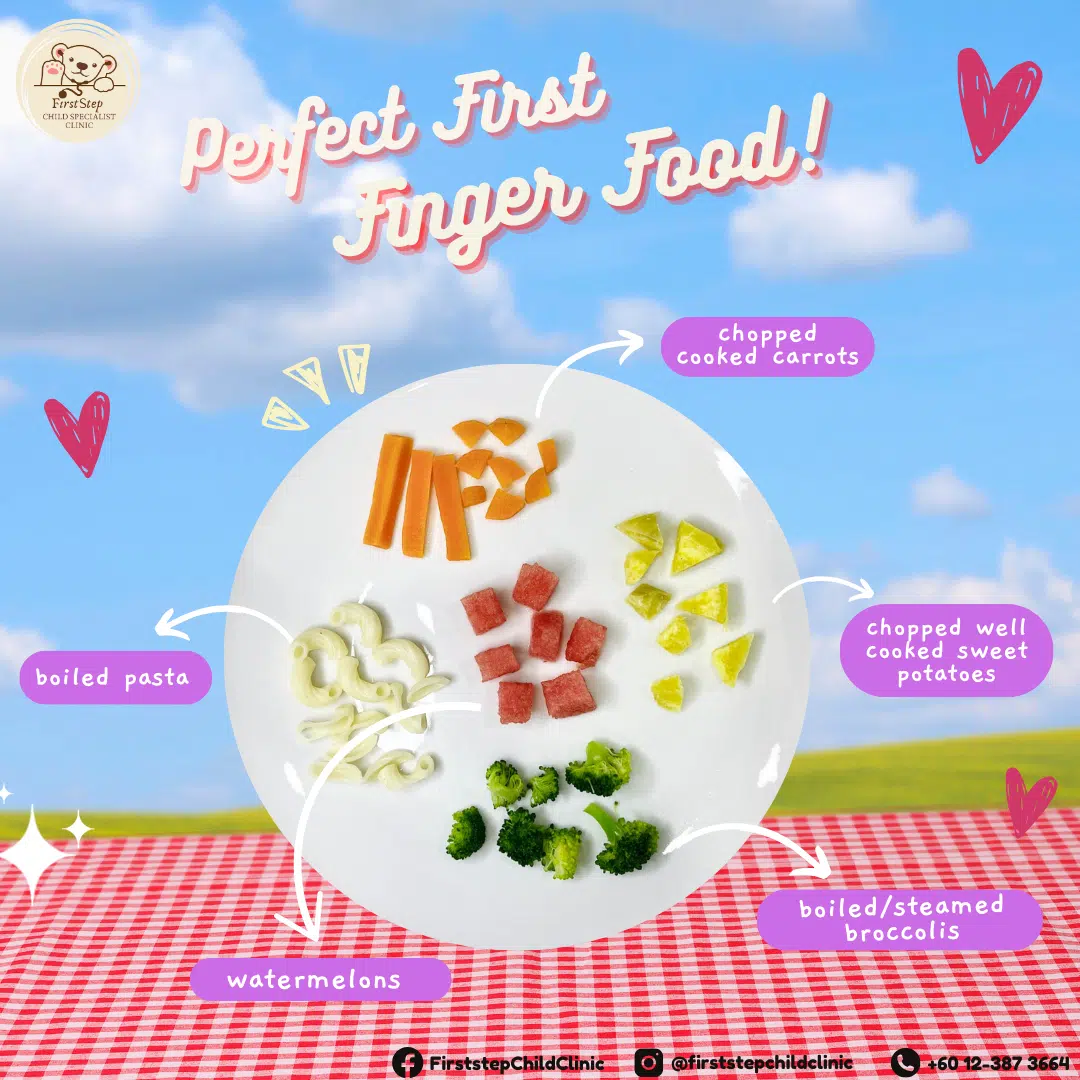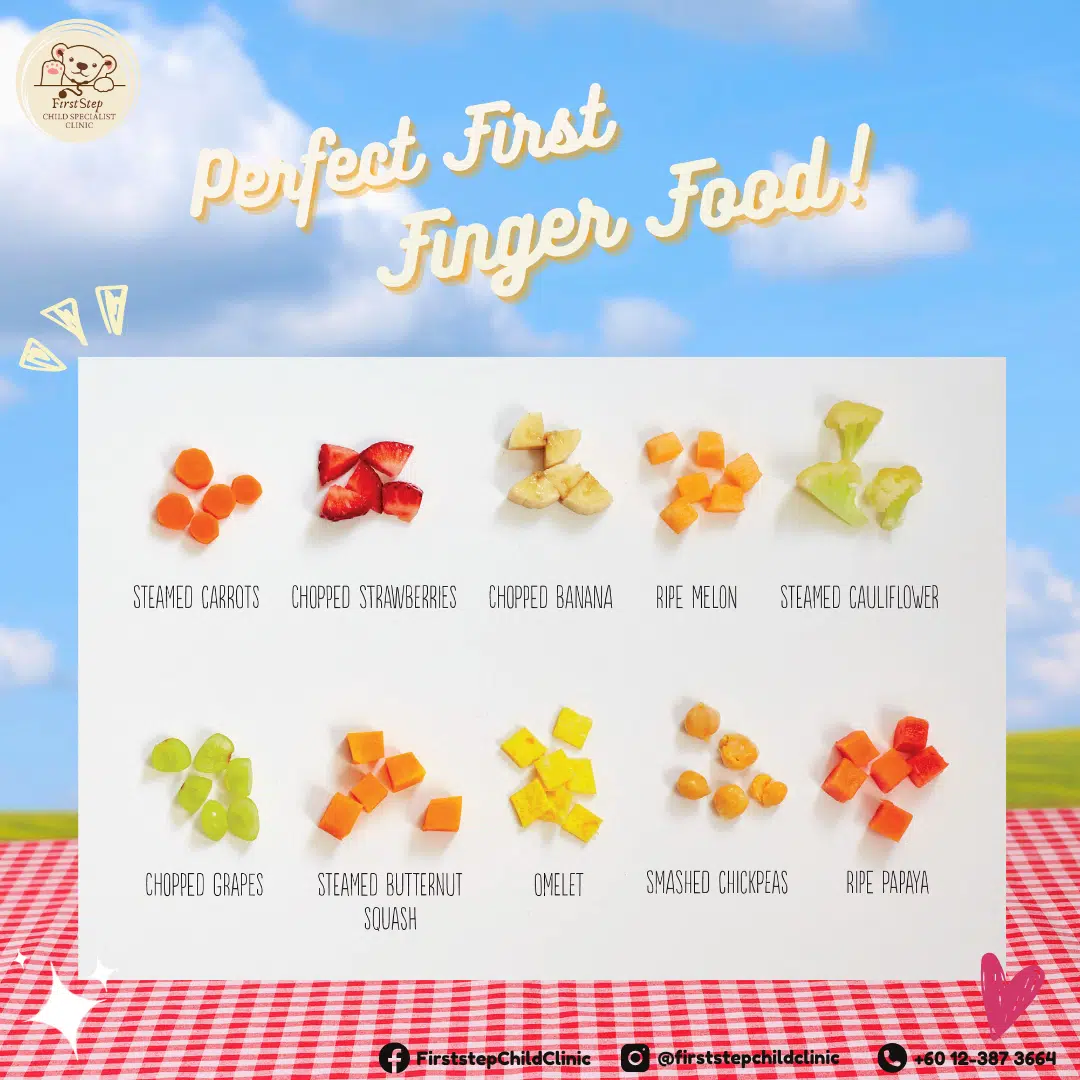
Nutritious Finger Foods for Your Baby!
Tiny Hands, Big Bites: Nutritious Finger Foods for Your Baby!
Finger foods: Any small piece of food that your baby can grasp and bring to their mouth. Babies develop the ability to pick up food at varying ages, but it’s best to introduce finger foods from nine months however it is best to have advice from your pediatrician. This helps your baby learn self-feeding and chewing skills. Most babies enjoy exploring food with their hands and eating
in this way.
At this stage, you might observe your baby starting to develop a pincer grasp and mimicking chewing motions. These are clear signs that they’re ready to try finger foods. Allowing them to pick up food with their fingers also helps strengthen their fine motor skills.
Finger Foods for Babies
It is important to introduce one new food at a time to monitor their allergic reactions. Parents can start with low-risk food such as bananas, avocados, or sweet potatoes. Please make sure that the finger food is cut into small pieces and watch them while they are eating to avoid choking.
First finger food :
- must be soft and able to squidge easily between your finger and thumb
- allows baby to squash finger food in their mouth using their tongue or their gums
- give finger food with flavors that your baby is familiar with.
How to Introduce New Finger Foods
When babies begin exploring finger foods, breast milk or formula will still be their primary source of nutrition, with purees coming next. You should continue to spoon-feed your child at first, but also allow them to self-feed. Place some finger foods on their high-chair tray and let them practice bringing it to their mouth between spoonfuls. If they become too frustrated, feel free to lend a helping hand.
- Follow your child’s cues and let your baby guide the process.
- If your baby reacts negatively, take a break and try again later.
- Babies may make faces when trying new foods, but it doesn’t always mean they dislike it. It can take up to 20 tries for them to adjust to new foods.
- Don’t force food, but be persistent in offering new options.
- Ease into finger foods by introducing thicker purees with some texture.
- Alternate smooth purees with slightly mashed foods to help your baby adjust to new textures.
- Expect a messy process—use newspaper or a vinyl tablecloth to make cleanup easier.
- Always supervise your baby during meals and watch for choking hazards.
- Introducing finger foods early helps with independence, fine motor skills, self-feeding, and oral development. Follow your baby’s pace.
Finger Food Safety
Your baby is still new to this, so they will likely swallow foods without chewing them.
- Avoid giving any finger foods that need a grinding action to chew.
- Offer finger foods that are soft and easy to swallow, and cut into small pieces so your baby cannot choke on them.
- A good rule of thumb is that sift and mushy finger foods are safe for your baby as small, round, hard, chewy, crunchy, or sticky foods may lead to choking.
- When selecting finger foods for babies, it’s important to avoid added salt and sugar, as adult snacks often contain higher sodium levels that aren’t suitable for infants. Instead, prepare food without these additives and add them to adult portions separately if needed.
REFERENCES
Baby Finger Foods: What to Give Your Infant. (2023, August 10). Www.thebump.com. https://www.thebump.com/a/finger-foods-for-baby
Best Early Finger Foods for Baby (With Tips, Visuals, and Recipes). (2020, January 26). Yummy Toddler Food. https://www.yummytoddlerfood.com/finger-foods-for-baby/
Best Finger Foods for Babies: The Ultimate Guide | Pampers. (n.d.). Web-Pampers-US-EN. https://www.pampers.com/en-us/baby/feeding/article/finger-foods-for-baby



